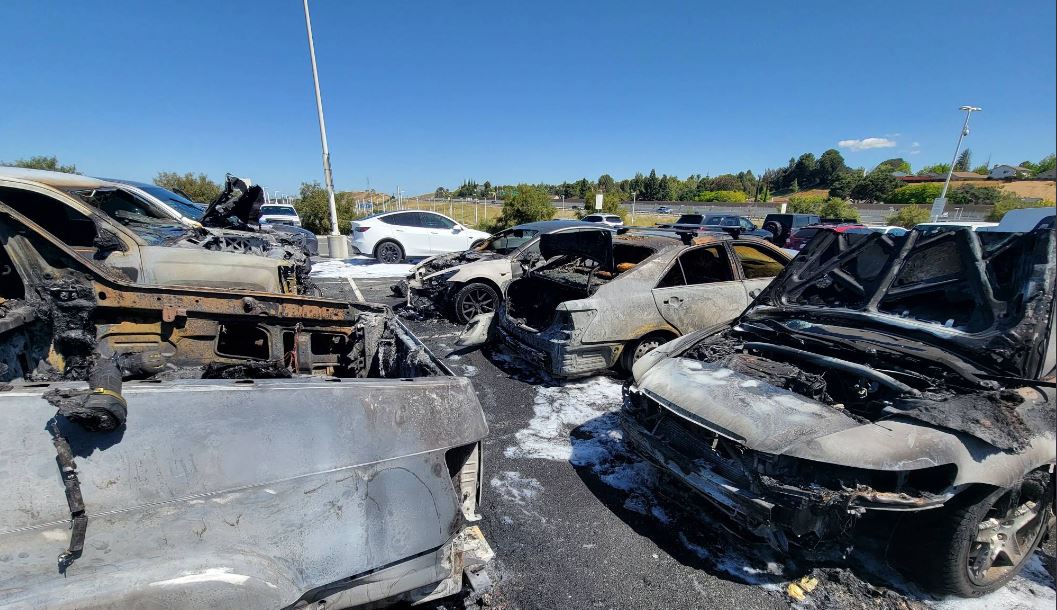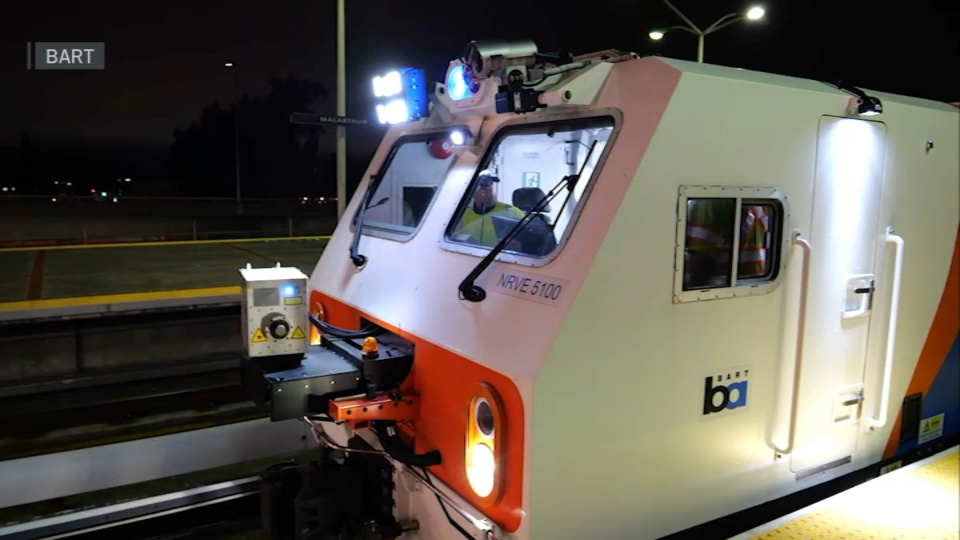The braking glitch that triggered mass BART delays this wet winter could pose a major challenge after its used to protect safety in a major earthquake, NBC Bay Area’s Investigative Unit has learned.
During the recent wet winter, BART acknowledged that its system experienced chronic meltdowns traced to a built-in braking problem with the new “Fleet of the Future” trains.
The problem is triggered when sensors detect the train wheels are slipping or sliding on wet rails. To assure safety, failsafe emergency brakes kick in to slow the train. But that has caused cars on the new fleet to suffer mass “wheel flats” – or spots of uneven wear - that forced entire trains out of service for days for wheel resurfacing.
While BART says the wet weather nightmare is largely over - at least until next winter - experts tell NBC Bay Area’s Investigative Unit that BART’s braking issues are far from over with. That’s because the emergency braking will be called upon to stop trains quickly to protect the system from damage caused in a significant earthquake.
Get a weekly recap of the latest San Francisco Bay Area housing news. Sign up for NBC Bay Area’s Housing Deconstructed newsletter.
“It sounds like BART has a wholesale problem,” said transportation consultant Jerry Cauthen, a five decade veteran of the public transit sector. He says emergency braking shouldn’t create its own kind of emergency. “You want to try to avoid that in a braking system -- if they have a braking system that's got that problem,’’ he said, “they've got to weigh whether it makes sense to replace it.”
BART has no plans to do that in the immediate future, although officials say automated train control technology may be the solution in the long run. In the meantime, they say stopping the trains quickly is vital to BART’s ability to serve as a lifeline before and after a quake.
To preserve its system, BART is relying on ShakeAlert – an early warning system of hundreds of seismic sensors managed by the U.S. Geological Survey. Those sensors detect precursor P waves, triggered before anyone feels the shaking. USGS ShakeAlert official Robert de Groot says the idea is to give BART an estimated 10 seconds to start to slow down trains.
“Anything we can do to eke out even a fraction of a second is going to help because it will get them doing what they're doing sooner,’’ de Groot said.
A ShakeAlert notification could give BART a head start on cutting train speeds from 70 mph to 27 mph, with automatic, normal braking. Then operators will be instructed to deploy the emergency brakes to make a complete stop, if necessary.
“It's a life safety issue,” said BART board member John McPartland, an early advocate of adopting ShakeAlert for the transit system. He says the goal is to ensure BART will stop in time to avoid quake hazards that could trigger derailments, so it can be up and running almost immediately after a significant quake. “When the streets are down, there's rubble in the streets and BART is running -- we will have that capability.”
But BART officials have acknowledged that using the emergency brakes on its new trains has triggered wet weather delays. Similar damage from a quake, experts say, would likely force trains to operate more slowly for months to allow times for all the trains to be serviced.
“Having wheel flats is not an ideal situation,” BART spokesman Jim Allison acknowledged.
He said BART hoped to resolve the braking wheel flat issue when it stopped accepting new cars for a year in 2021. But in the end, BART opted to resume shipments last year without resolving it. “Overall,” he said, “the new “Fleet of the Future” trains are much more reliable than the legacy fleet -- and we're confident in the new technology.”
“As tradeoffs go, it’s worth the price,” BART board Director McPartland said, adding that all those wheel flats won’t pose a safety risk. Although, he says, riders may have to endure constant uncomfortable clunking from all the flat wheels.
“But if you're in a post-earthquake environment and you're trying to get from point A to point B,’’ he said, “I’ve got news for you: We can listen to the clunk.”
But riders will likely have to put up with more than just that clunking. Experts say BART will have to slow speeds on its clunky trains to keep them in operation during the months it will take for all the wheels to be resurfaced. BART slowed trains during the recent wet weather to limit the damage from flats due to sudden braking.
Experts say the glitch will likely have greater impact as BART replaces more of its legacy fleet, which has proven far less vulnerable to mass wheel damage from emergency braking. Right now, new cars make up just over half of the trains in service.
BART currently expects to retire all the old cars within two years.



